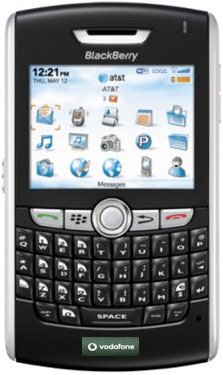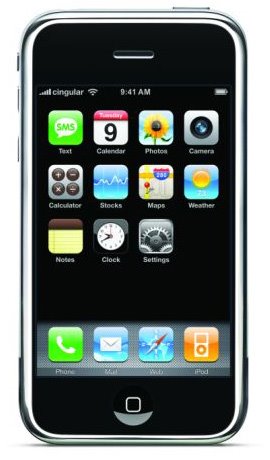The first known teardowns for the white iPhone 4, posted on Twitter and picked up by popular Japanese blog MacOtakara, show the phone's rear-facing camera lens and proximity sensor are different from the black iPhone 4's As you can see in the photo below, the camera lens for the white iPhone was planted deeper than in the black version, perhaps to counteract rumored "light leakage issues" with the iPhone's semi-translucent glass case that made photos captured on a white iPhone look muddled, according to Apple Insider. The recessed lens may also have something to do with a widely circulated rumor that the white back panel reflected too much light from the iPhone's LED flash. PCMag's tablet analyst Tim Gideon once speculated that overexposure may have been the reason why Apple equipped white iPad 2s with aluminum backings.
Here's one of the teardown photos comparing rear-facing lens of white iPhone (left) to black iPhone (right):

The proximity sensor, which deactivates the display and touchscreen when the phone is brought near the face during a call, has been re-worked (see photo below), though details were not given other than the "magnitude of the incident light" that activates the sensor is of a different amount than on the black iPhone 4. Here's a photo of modified proximity sensor:

However, if you simply compare the white iPhone to the black iPhone in Apple's advertisements, you'll already notice an extra slit above the ear receiver (see photo below) which leads to the proximity sensor. One of the earliest criticisms of the iPhone 4 was that its buggy proximity sensor was causing calls to hang up at the mere touch of your cheek. A forum member at MacRumors speculated that the slit was there so the proximity sensor could "see" through the white iPhone's opaque case. Photo of extra slits (circled) on the white iPhone:
 When Apple first announced the delay of the white iPhone in June 2010, it was because the white models were "more challenging" to manufacture than expected. Ten months later the white iPhone finally hit Apple stores. But within 24 hours it was already hit with reports of people discovering that the white iPhone was 0.2mm thicker than the black version. Apple exec Phil Schiller called these reports "junk."
When Apple first announced the delay of the white iPhone in June 2010, it was because the white models were "more challenging" to manufacture than expected. Ten months later the white iPhone finally hit Apple stores. But within 24 hours it was already hit with reports of people discovering that the white iPhone was 0.2mm thicker than the black version. Apple exec Phil Schiller called these reports "junk."
thx
Here's one of the teardown photos comparing rear-facing lens of white iPhone (left) to black iPhone (right):

The proximity sensor, which deactivates the display and touchscreen when the phone is brought near the face during a call, has been re-worked (see photo below), though details were not given other than the "magnitude of the incident light" that activates the sensor is of a different amount than on the black iPhone 4. Here's a photo of modified proximity sensor:

However, if you simply compare the white iPhone to the black iPhone in Apple's advertisements, you'll already notice an extra slit above the ear receiver (see photo below) which leads to the proximity sensor. One of the earliest criticisms of the iPhone 4 was that its buggy proximity sensor was causing calls to hang up at the mere touch of your cheek. A forum member at MacRumors speculated that the slit was there so the proximity sensor could "see" through the white iPhone's opaque case. Photo of extra slits (circled) on the white iPhone:

thx




0 comments:
Post a Comment